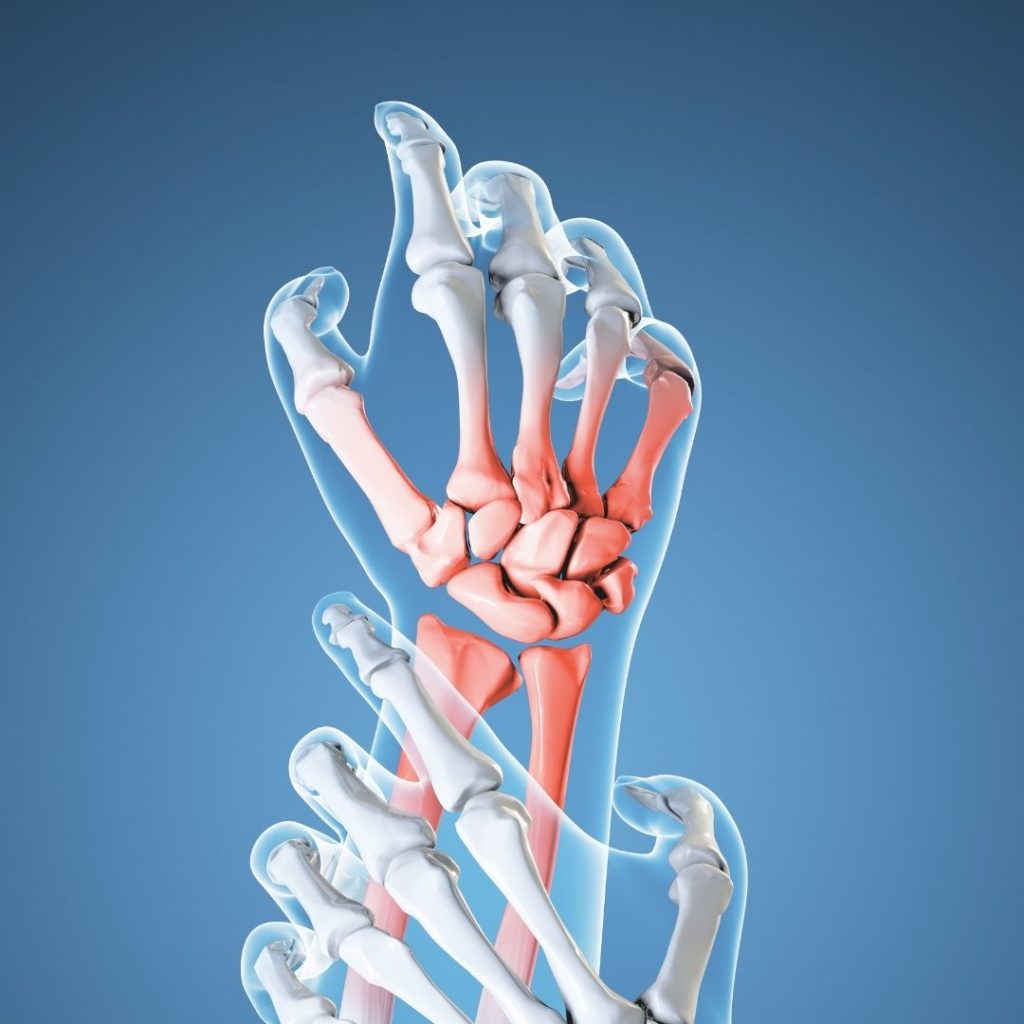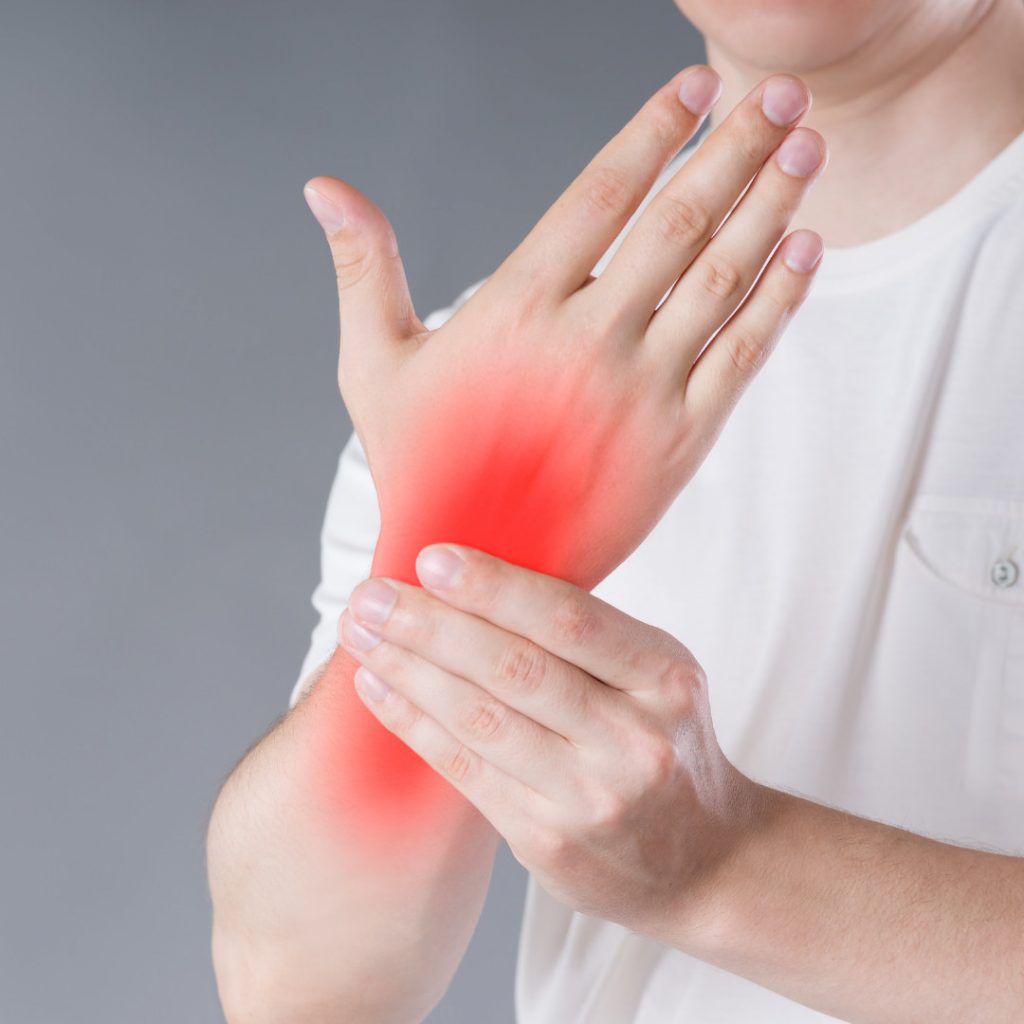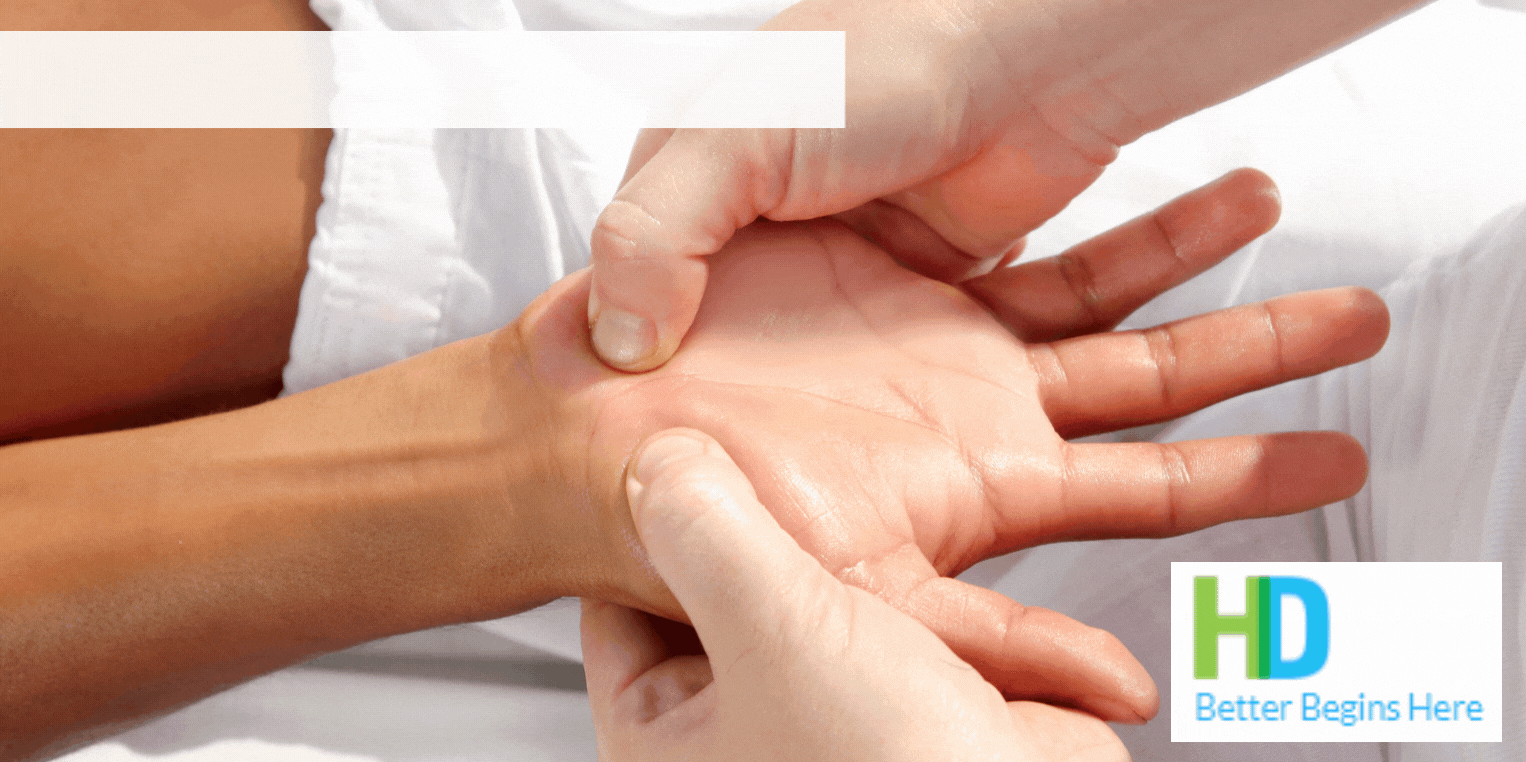Hand injuries happen in many different ways. The most common kinds of hand injuries are fractures, dislocations, laceration or avulsion, and burns. Here at H&D Physical Therapy, hand therapy in New York City, we offer many services to treat an abundance of hand injuries.
Types Of Hand Injuries That Require Hand Therapy In New York City:
Fractures are when a bone is broken due to some kind of force impacting it. A hand fracture is called a broken hand or a boxer’s fracture. A hand fracture can happen if you punch something hard with your fist. When this happens, the thumb and index finger bones (called the metacarpals) break and stick out through the skin on the palm side of your hand.
Dislocations are when a bone comes out of its socket at a joint.
A hand dislocation is called an “open” dislocation. An open or complete dislocation can happen if you fall on your hand and the bones of the palm push up into your wrist. This might also happen if you quickly hit something hard with your hand, like a baseball bat. When this happens, the thick bone that connects to your pinky finger (called the trapezium) dislocates (pops out of the socket at the base of your hand).
A laceration is when you cut or tear your skin. A laceration on the palm is called a palm laceration. To get a palm laceration, something has to hit or scrape across your palm, like a fall on the pavement. Your palm might also get scratched if you use your hand to protect yourself from something sharp or rough hitting or scraping across it.

Risk Factors:
Some risk factors of hand injuries are :
- Being a man between the ages of 16 and 35 years old.
- Having a home business with tools around, like a carpenter or mechanic.
- Being an alcoholic.
- Participating in sports that can injure the hands, such as boxing or skiing.
- Ways you might prevent hand injuries are:
- Protecting your hands with gloves while doing things that can injure them.
- Not taking part in sports that would injure the hands, like boxing or skiing.
- Wearing protective gear when driving (such as gloves).
Always seek medical attention for any open (complete) fractures or dislocations that you have. These kinds of hand injuries can be dangerous because they can damage blood vessels and nerves in your hand, leading to loss of function of your hand.
Treatment:
Treatment options for hand injuries are :
- Ibuprofen or acetaminophen for any pain. You can also put ice on the area to help reduce swelling.
- Hand Therapy in New York City
- If your hand is cut, it might need stitches. A broken bone might need a cast, splint, surgery,or other treatment. Before getting medical treatment for your hand injury, make sure that you tell the doctor about all of your symptoms and medical history.
- Other things to think about:
- Always be sure to wear protective gear when doing sports or driving that might injure the hands (gloves).
- If you do not wear gloves to protect yourself, make sure that you are using tools correctly and carefully.
- Do not drink alcohol before doing any sports or driving that might injure the hands.
- Do not take part in boxing or skiing as those can easily injure your hand.
Contact Us: Hand Therapy in New York City
As you can see, hand injuries are very common but can still be very severe. Our staff knows all the ins and outs of hand injuries. They are both educated and experienced in this field; and are eager to help you. Contact us today to make an appointment with us.
No matter what line of work you are in, our hands are one of the most used and delicate parts of our bodies. That’s why we have to do the best we can to prevent injuries from occurring. Everything has a risk of injuring your hands. Everything from typing on a keyboard to lifting heavy objects, even hobbies like sports and gardening, is risky.
Identifying common hand injuries can help you prevent future damage or learn when hand therapy in New York City is necessary. If you do get injured, H&D Physical Therapy is here to help! We offer hand therapy in New York City to help you gain function and mobility back.
Sudden Injury
We can classify hand injuries into two notable groups, sudden injuries and overuse injuries. First, we’ll go over sudden – also known as acute – injuries. Acute injuries occur when a harsh impact hits the hand or wrist. This type of injury often happens during high-impact sports such as football. However, a fall or accident can also cause an acute injury. Some examples of acute hand injuries include:

- Skier’s thumb – this injury occurs when the thumb is pulled too far to the side, causing the ulnar collateral ligament to tear. As the name suggests, skiers commonly get this injury during a fall while holding onto a ski pole.
- Mallet finger – Mallet finger occurs when the tendon in the fingertip gets ruptured. When the tendon gets injured, this causes the fingertip to become unable to bend. Mallet finger can happen when the fingertip is hit with a ball or slammed in a door.
- Joint sprains – A joint sprain occurs when the ligaments in the hands are stretched too far and tear. Depending on the intensity of the sprain, hand therapy in New York City may be necessary.
- Broken bones – Playing high-impact sports has a higher chance of potentially breaking bones in your hands or wrist. Wearing protective gear while you are playing can help reduce that risk.
- Dislocations – When the joint is suddenly twisted, a fall occurs, or a direct blow to the joint can cause a finger to be pulled out of its socket.
Overuse Injuries
The second type of hand injury is called overuse injuries. These issues occur when too much stress is placed on a joint or muscle over time. Overdoing or repeating the same activity can cause overuse injuries.
These types of injuries usually happen in the workplace. Lifting heavy objects and repeating the same movements can contribute to overuse injuries.
Hand therapy in New York City is highly effective for treating these types of problems. Some examples of overuse injuries include:
- Carpal tunnel syndrome – As the median nerve in the wrist becomes overused, swelling may occur. This swelling will put more pressure on the nerve. Carpal tunnel syndrome is caused by any repetitive movement of the wrist, including typing on a keyboard. If you have carpal tunnel syndrome, you may feel pain and numbness in your wrist and fingers.
- Tendonitis – Tendonitis is the most common type of overuse hand injury. This issue occurs when tendons in the hands become inflamed. There are different types of tendonitis depending on where the tendon is inflamed. Tendonitis in the hands often makes it painful to move your fingers and may lead to stiffness in the hands.
- De Quervain’s tenosynovitis – De Quervain’s tenosynovitis is when the thumb and wrist tendons become irritated. Any job that requires twisting the wrist or activities such as knitting can cause de Quervain’s tenosynovitis.
- Stenosing tenosynovitis – Stenosing tenosynovitis is also known as trigger finger. It is caused by the tendons on the palm side of your hand swelling. Because of the inflammation, the finger may stay in the bent position. Putting stress on your fingers can cause this condition.
How Hand Therapy In New York City Can Help
If you have any of the injuries listed above, hand therapy in New York City is more helpful than you think! At H&D Physical Therapy, we can use various techniques to help reduce pain and increase mobility. The type of treatment depends on the type of injury you have, but some examples of the treatments we offer include:
- Custom orthosis fabrication and taping
- Wound management
- Manual therapy to increase mobility
- Neuromuscular reeducation
- Paraffin bath
To learn more about hand therapy in New York City and a complete list of the hand injures we treat, visit our website! Don’t hesitate to contact us anytime if you have any questions or if you want to make an appointment. We want you to live your life free from any pain; let us help you!

At H&D Physical Therapy, we have experience successfully treating any type of hand-joint-related impairment you can muster up. Spring is officially here, and Summer is right around the corner; therefore, we tend to see more hand-related injuries due to the increase in outdoor recreational activities. Our hand therapy in New York City will have no trouble handling whatever hand injury you may sustain in the coming months.
Hand Therapy
Our hand therapy in New York City offers custom orthosis fabrication, wound management, soft tissue mobilization, joint mobilization, neuromuscular reeducation, and paraffin bath.
c
Wrist Fractures
The most common orthopedic hand injuries reported tend to be wrist fractures this time of year. These are usually the result of falling off a moving object, most commonly a bicycle or a skateboard. Naturally, your hands are your only way to brace the fall, which leads to them sustaining the injury. Hand therapy can be very resourceful when it comes to wrist injuries; however, that process usually occurs after the recovery period of whatever procedure is recommended for the damage. The first thing to do when you believe you’ve sustained a wrist fracture is to get an MRI to determine if it’s actually fractured or not.
It’s essential to get an MRI and not an X-Ray because MRIs are able to identify minor fractures more so than an X-Ray would. The procedure will vary depending on the severity of the injury. If the MRI detects that the broken ends of your bones aren’t aligned properly, the doctor will perform a minor reduction procedure. It’s crucial to move your fingers as much as possible to prevent them from stiffening. It should be clarified that you should only move your fingers and not the affected bone, as that should remain in a cast for the time being. Once the cast is removed, we can begin therapy. Hand therapy in New York City will be more than happy and willing to assist. Certain exercises are required to restore mobility to its original form fully.
Carpal Tunnel Syndrome
As opposed to wrist fractures, this type of hand impairment isn’t associated with any particular time of year as it can happen to anyone. It’s most commonly associated with those who spend a lot of time on the computer either for work or recreationally or those that spend a significant amount of time writing. Carpal Tunnel Syndrome is when too much pressure is applied to the median nerve, located in the palm area. When the median nerve stays in the same position for long periods, it becomes compressed and stuck in said position.
The symptoms of this include:
- Tingling and numbness in hand.
- Sometimes even an electrical shock-like feeling.
- A general weakness in the hand paired with the inability for the hand to perform its normal duties such as firmly gripping objects.
Sometimes it can even affect the entire arm. Once these symptoms interfere with everyday activities, that is the moment to seek medical attention. Physical therapy can certainly help relieve the pain and numbness that accompanies CTS. However, some cases are severe enough that surgery is highly recommended. Similar to wrist fractures, we offer bracing to help relieve symptoms.
Tendonitis
When the tissues in your wrist that connect the muscles become inflamed, that is what’s known as tendonitis. Tendonitis is usually the result of too much pressure being applied to the tendons, which are the muscles that control your wrist. This can be caused by similar activities that lead to carpal tunnel syndrome. Things like constantly typing and/or writing can potentially lead to tendonitis.
Symptoms include difficulty performing normal activities that involve the wrist. These include opening jars and turning doorknobs. Other symptoms can include a stiff or a popping sensation and swelling. Simple anti-inflammatory medications can cure this. In terms of physical therapy for curing tendonitis, exercises such as eccentric stretching and dry needling are very effective. Eccentric stretching is essentially the lengthening of a muscle performed by an outside source. Dry needling is sticking a sterile monofilament needle into the muscle’s trigger point, which in turn causes the muscles to loosen.
Contact Us For Hand Therapy in New York City
If you have any questions regarding our procedures for all hand-related issues and services or our hand therapy in New York City, please visit our website or call us at 212-249-0904.
You must be logged in to post a comment.